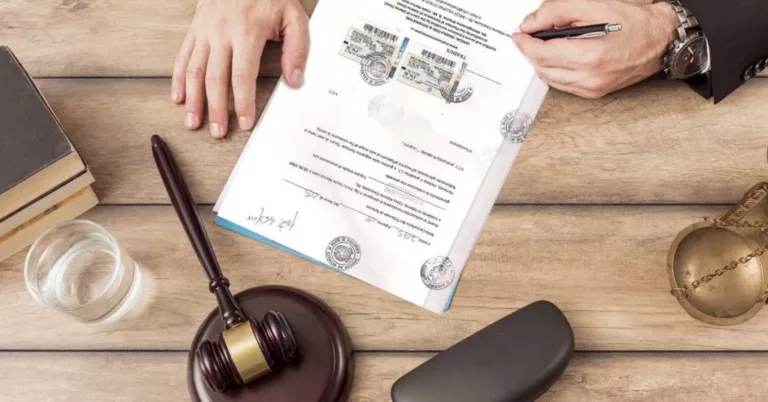100% FREE CONSULTANCY

Transferring car insurance is an important step when buying or selling a vehicle in the UAE. It ensures that the new owner is properly covered and that the seller is no longer responsible for the car. The process may seem complicated at first, but it’s straightforward once you know what to do. Whether you’re new to the process or a seasoned professional, this guide will help you understand the steps involved in smoothly transferring insurance, making the transition hassle-free for both parties.
Transfer Insurance of a Car

Transfer Insurance of a Car refers to the process of officially changing the car insurance policy from the seller to the new owner when a vehicle is bought or sold. It ensures that the new owner has valid coverage while the previous owner is no longer responsible for the car. It involves notifying the insurance company, submitting required documents, and sometimes paying a small fee to complete the transfer.
Step-by-Step Guide on Transferring Car Insurance

Here are step-by-step guides about transfer insurance for a car.
1. Gather the Required Documents
Collect all the necessary documents Before heading into the transfer process, there are some documents you will need to obtain. These include the original car insurance policy, the car’s registration, commonly referred to as Mulkiya, the Emirates ID of the new owner, and sometimes a no-claims certificate. The reason these documents are essential is that the insurance proof indicates you have cover, the car registration proves that the car is registered, and the Emirates ID proves the identity of the new owner.
2. Notifies the Insurance Company
The other thing you need to do once you collect all your documents is to notify your insurance company about the change of ownership. One can do this by calling them, sending a mail, or visiting their office. Most companies in the UAE have made this process uncomplicated through the internet. It is timely as they will be in a position to start the transfer process and ensure that the car gets covered during the transfer process. Failure to let them know might attract coverage problems you would like to avoid.
3. Request a Transfer from an Insurance Company
Once you communicate the news to your insurer, they will give you the transfer form. It can mostly be accessed online or obtained from the office of any insurance company. Fill it up with details such as the number assigned to the car’s registration and the number of the current policy to contain information about the new owner. Be sure to fill in all details carefully so that there are no delays in the transfer. This is important because this form is what transfers the insurance to the owner.
4. Pay Transfer Fees

Transfer of insurance typically involves small transfer fees. The cost of these fees varies by insurance provider but is generally cost-effective. Payment methods include:
- Accessing the online portal
- Bank transfer
- Visiting the insurance office
- Payment of the fees is essential for completing the transfer process.
Without payment, the transfer will not be finalized. It’s important to make the payment quickly to avoid any delays or inconveniences.
5. Follow RTA Rules and Regulations
In the UAE, transferring car insurance must also comply with the Road and Transport Authority (RTA) regulations. The RTA requires that you have valid car insurance before registering a vehicle in someone else’s name.
The transfer of insurance and ownership must happen together, so make sure to handle the insurance first. Additionally, the new owner must have a no-claims certificate if required, and the vehicle needs to pass an RTA inspection if applicable. The RTA rules are there to ensure safety and legality on the road, so it’s important to follow them closely.
Read More about the Rules and Regulations for Transfer Insurance.
6. Inspection and Policy Adjustment
Your insurance provider may require a car inspection before finalizing the transfer of insurance. This inspection ensures that the car’s condition aligns with the information provided in the current policy. The primary aim is to verify the physical state of the vehicle, ensuring that there are no undisclosed damages or issues.
This step protects both the insurance company and the new owner by providing accurate information about the car. After the inspection, the insurance provider may adjust the premium based on several factors such as:
- The new owner’s driving history and claims record.
- Any changes in the car’s condition were noted during the inspection modifications or wear and tear.
- This inspection and potential adjustment process ensures that the insurance coverage remains fair and appropriate for the owner.
- It helps avoid situations where the new owner pays for coverage that doesn’t accurately reflect the vehicle’s value or condition.
If an inspection is deemed necessary, the insurance company will coordinate and schedule it for you. Typically, they will reach out to arrange a convenient time for the inspection to take place, ensuring a smooth transfer process.
7. Submit the Transfer Form
Once everything is ready, submit the transfer form along with the required documents. You can usually do this online or by visiting the insurance office. It’s a good idea to double-check that all the information is correct before submitting the form to avoid delays. In the UAE, it’s important to submit everything within the timeframe given by your insurer, otherwise, you may face extra fees or problems with coverage.
If You want to learn more details about the Transfer of a Car Insurance Step by Step.
Key Considerations When Transferring Insurance
Transferring car insurance is a vital step when changing ownership of a vehicle. Here are some important things to remember:
1. Ensure Continuous Coverage
Maintaining continuous coverage is crucial during the transfer. Make sure there’s no gap in insurance protection, as this can lead to legal issues or financial losses in case of an accident. Notify your insurance provider immediately after the sale to confirm that the new owner is covered under the existing policy until the transfer is complete.
2. Common Mistakes to Avoid
The following describes common mistakes that are avoided. Watch out for these common mistakes during the transfer process:
- Don’t wait to inform your insurer about the ownership change; do it as soon as possible.
- Gather all necessary documents, like the current insurance policy, car registration, and Emirates ID of the new owner, ahead of time.
- Discuss the specifics of the insurance policy, including coverage limits and deductibles, with the owner to ensure they are comfortable with the terms.
- Be aware of the Road and Transport Authority (RTA) rules regarding insurance transfers to avoid delays or legal issues.
By keeping these considerations in mind and steering clear of common mistakes, you can make the insurance transfer process smoother and more efficient for everyone involved.
Note: Transferring car insurance is an essential step when buying or selling a vehicle. It ensures that the new owner is properly covered and that the seller is no longer responsible for the car. If you plan to drive your new vehicle in Dubai after the insurance transfer, it’s important to utilize “Q Links Translation Company” for Driving License Translation in Dubai.
We ensure that your driving credentials are recognized, especially if your license is issued in a language other than Arabic. By following these steps, you can confidently drive your car without any issues after securing the insurance.
Conclusion
Transferring car insurance correctly is crucial for both the buyer and the seller. Completing the process smoothly ensures continuous coverage, protecting everyone from potential risks and legal issues. By following the necessary steps and steering clear of common pitfalls, you can simplify the transfer and make it stress-free.
FAQs About Transferring Car Insurance
Here are some FAQs.
1. What documents do I need to transfer car insurance?
You will need the original car insurance policy, the car’s registration (called Mulkiya), the Emirates ID of the new owner, and sometimes a no-claims certificate.
2. How do I tell my insurance company about the ownership change?
You can let your insurance company know by calling them, sending an email, or visiting their office. Many companies also have online options to make this easier.
3. What steps do I follow to transfer my car insurance?
First, gather the required documents. Next, notify your insurance company, fill out a transfer form, pay any fees, follow the RTA rules, and then submit everything.
4. Will I have to pay any fees to transfer my car insurance?
Yes, there are usually small fees for transferring your insurance. The amount can differ depending on the insurance provider, and you can pay online, via bank transfer, or in person.
5. Do I need to get my car inspected before I transfer the insurance?
Sometimes, your insurance provider might want to inspect the car. This is to check that its condition matches what’s stated in your current policy.
6. What if I forget to tell my insurance company about the ownership change?
If you don’t notify your insurance company, there might be problems with coverage. This could leave the new owner without insurance, which can be risky for you.
7. Can I drive my new car right after the insurance transfer?
Yes, once the transfer is complete and all the paperwork is done, you can drive your new car without any worries.
8. How can I make sure I don’t have any gaps in coverage during the transfer?
To keep continuous coverage, let your insurance company know as soon as the sale happens. Confirm that the new owner is covered until the transfer is finished.
9. What mistakes should I avoid when transferring car insurance?
Avoid waiting too long to inform your insurer, not gathering all necessary documents in advance, and not discussing the insurance details with the new owner.
10. What happens if I don’t follow the RTA rules when transferring insurance?
If you don’t follow the RTA rules, you might face delays in the transfer process and could get into legal trouble, like fines for driving an unregistered or uninsured vehicle.



